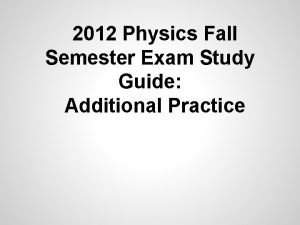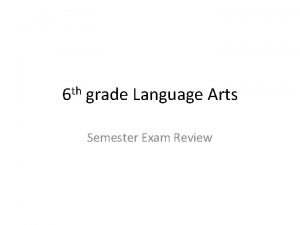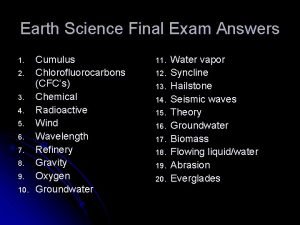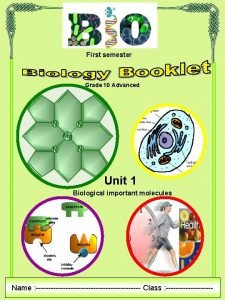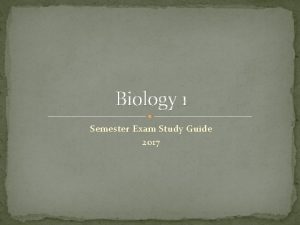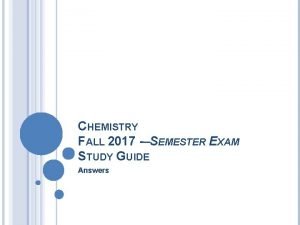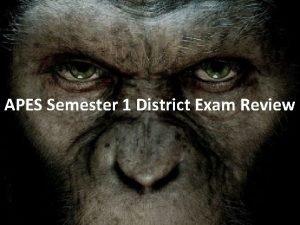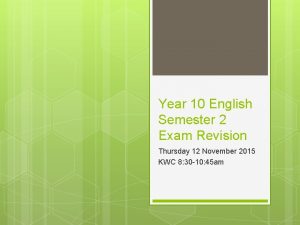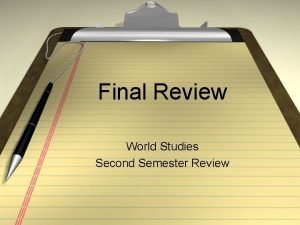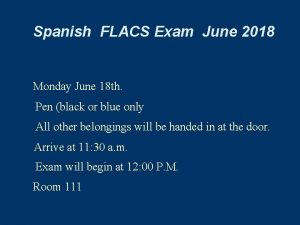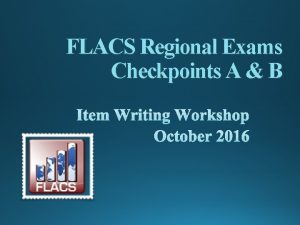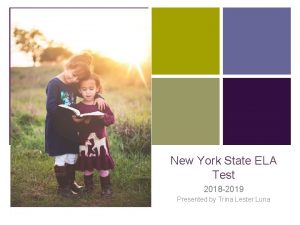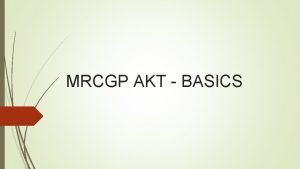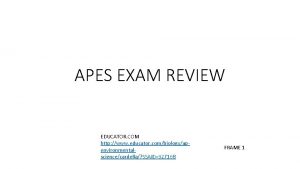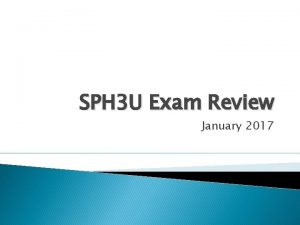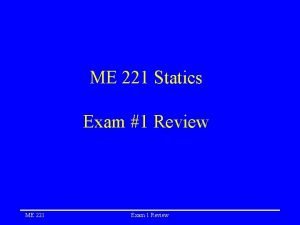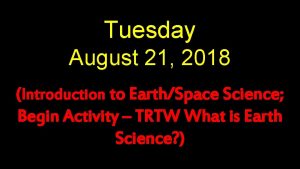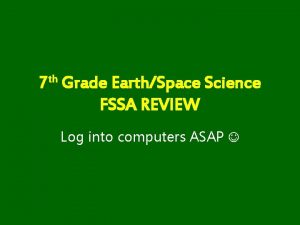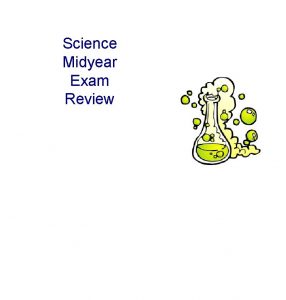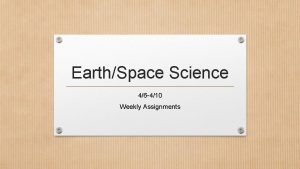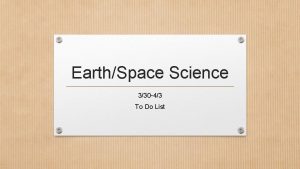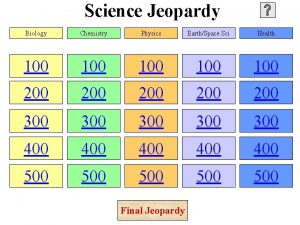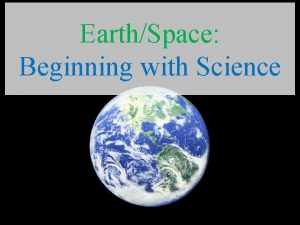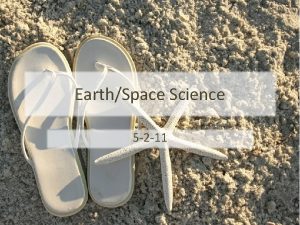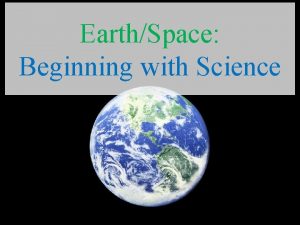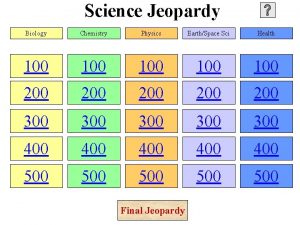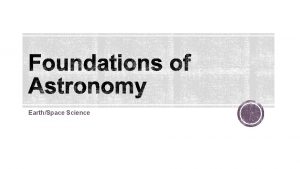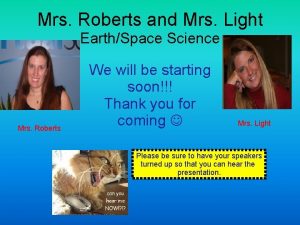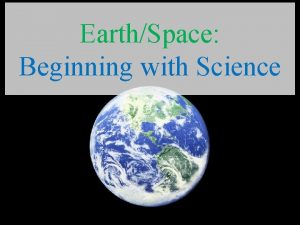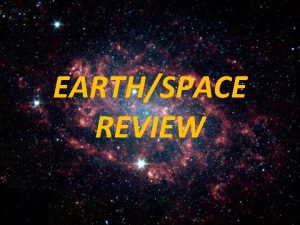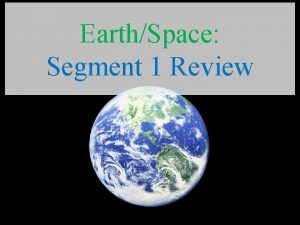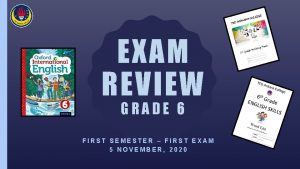Review for EarthSpace Science Spring Semester Exam 2018
































































- Slides: 64

Review for Earth/Space Science Spring Semester Exam 2018

1 Explain why the Earth's interior is separated into layers. Iron and nickel are more dense than rock, so the metallic components sank to the core, while the rocky components floated to the surface.

2 Which of Earth’s sphere’s are illustrated in this picture? • hydrosphere • atmosphere • lithosphere • biosphere

3 This picture illustrates an interaction between which two of the Earth’s spheres? • hydrosphere(clouds) • atmosphere (air)

4 Provide a one or two-word description for each of Earth’s spheres. • • geosphere – solid hydrosphere – water atmosphere – air biosphere – life lithosphere – crust asthenosphere – mobile, solid cryosphere – ice pedosphere – soil

5 The two spheres of Earth that are most directly responsible for continental drift and tectonic plate movement are: the asthenosphere the lithosphere

6 Explain how Earth developed a layered structure because of chemical differentiation as a result of the Earth remaining in a molten (semi-liquid) state for a long time. Earth developed a double metallic core, which formed the magnetosphere, making possible an atmosphere, liquid water, and life.

7 List four attributes that the Earth has and that the Moon doesn’t have. a large iron-nickel core and resulting magnetosphere an atmosphere liquid water life

8 What generates the Earth's magnetosphere? the Earth's double iron core

9 Which tectonic method form the following features on Earth? the Himalayan mountains - continental – continental plate convergence the Andes mountains – oceanic – continental plate convergence the Caribbean islands - oceanic – oceanic plate convergence the Hawaiian islands - an intraplate hotspot the Mid-Atlantic Ridge - oceanic – oceanic plate divergence

10 List the five pieces of evidence cited by Alfred Wegener to support his hypothesis of continental drift. the fit of South America and Africa fossils match across the seas rock types and structures match across the seas similar mountain ranges on different continents similar ancient climates evidence matches on presentday continents

11 According to the world map you see here, which type of tectonic feature is located along the western coast of South America? a major oceanic-continental convergence zone

12 Define the following terms pertaining to continental drift and plate tectonics: continental drift - refers to the movement of the Earth's land masses relative to each other, thus appearing to travel across the globe. plate tectonics - theory that Earth's outer shell is divided into several plates that glide over the mantle, the rocky inner layer above the core. The plates act like a hard and rigid shell compared to Earth's mantle. This strong outer layer is called the lithosphere. seafloor spreading - a process that occurs at mid-ocean ridges, where new oceanic crust is formed through volcanic activity and then gradually moves away from the ridge. plate subduction - the process that takes place at convergent boundaries by which one tectonic plate moves under another tectonic plate and sinks into the mantle as the plates converge. strike slip faults - vertical (or nearly vertical) lithospheric fractures where the blocks have mostly moved horizontally.

13 Where is mountain building (orogeny) most common? at convergent plate boundaries

14 Define the following terms pertaining to mountain building. • orogeny - forces and events leading to a large structural deformation of the Earth's lithosphere (crust and uppermost mantle) due to the engagement of tectonic plates. • extrusive igneous activity - volcanic activity taking place on or above the surface of the Earth. • intrusive igneous activity - volcanic activity taking place below the surface of the Earth. • cinder cone volcano - a steep, conical hill consisting of glassy volcanic fragments that accumulate around and downwind from a volcanic vent. They range in size from tens to hundreds of meters tall. • composite volcano (stratovolcano) - a volcano built up of alternate layers of lava and ash. • shield volcano - a broad, domed volcano with gently sloping sides, characteristic of the eruption of fluid, basaltic lava. • lava plug (plug dome) - a volcanic object created when magma hardens within a vent on an active volcano. They can cause an extreme build-up of pressure if rising volatile-charged magma is trapped beneath it, and this can sometimes lead to an explosive eruption. • dormant volcano - an active volcano that is not erupting, but supposed to erupt again. • extinct volcano - a volcano that has not had an eruption for at least 10, 000 years and is not expected to erupt again in a comparable time scale of the future.

15 What does this picture illustrate? the subductive process that formed the Andes Mountains in Chile

16 The mountains and cliffs of the Yosemite Valley are made from which type of rock? granite

17 Magma within the Earth will directly produce what type of rock? igneous

18 Describe the process of lithification. the transformation of sediment into rock by the pressure of layering

19 What is the texture of igneous rock determined by? rate of cooling determines size of crystals

20 What properties do you look for when identifying an igneous rock? Crystal size (grain) Mineral content (color)

21 What properties do you look for when identifying a sedimentary rock? particle size (grain) mineral content (color)

22 What properties do you look for when identifying a metamorphic rock? foliation mineral content (color)

23 Where are coarse grained igneous rocks formed? intrusively (under the surface)

24 What is the rule in nature for determining which minerals are found together in the same igneous rocks? minerals with similar crystallization temperatures will sometimes be found in the same rock

25 Describe how this rock formed. Forcibly ejected from a volcanic vent, cooled very quickly on surface

26 List three events that would increase the salinity of ocean water in a given area. evaporation formation of sea ice formation of icebergs

27 The chart tells us that: Ocean temperature is greatest at the equator but salinity is greatest in the temperate regions.

28 Ocean water surface temperature varies with: receipt of solar radiation

29 What are ocean currents? undersea rivers of water flowing from one place to another

30 Which factor has the greatest effect on seawater density? temperature

31 Which part of a wave actually moves in a straight line forward as the wave passes travels? The energy of the wave (waveform)

32 Freshwater accounts for about _____% of all of Earth's water. 3%

33 What is the source for almost all of Earth's fresh water? Precipitation

34 What will be formed here in the future? an oxbow lake

35 What is the main difference between a lake and a reservoir? lakes are natural, reservoirs are manmade

36 What is true concerning groundwater as a part of all water on Earth? it is the most abundant liquid freshwater source on Earth

37 Karst topography refers to landscapes that to a large extent have been shaped by: groundwater

38 What are aquitards? non-permeable layers of rock that support aquifers

39 List three particulate pollutants in our atmosphere. smoke dust smog

40 List a variable component of Earth's atmosphere. water vapor particulate solids

41 What factor most affects atmospheric pressure? altitude

42 List three major benefits of Earth's atmosphere to life on Earth. contains the oxygen that we breathe shield from solar radiation creates pressure to hold water in liquid phase

43 Atmospheric pressure is caused by: the weight of the air above.

44 What information can be deduced from the chart? atmospheric pressure decreases as altitude increases

45 Draw the weather map symbols for the following: cold front warm front stationary front occluded front

46 What are the numbers on this weather map indicating? atmospheric pressure in millibars

47 This weather system was most probably caused by which type of front? a cold front

48 According to the forecast map, name an area that will have cooler and/or stormy weather in the next 24 hours. DFW

49 What three events would probably occur along a cold front where very warm, moist air is being displaced? a change in wind direction strong thunderstorms cooler weather

50 A hurricane has slower wind speeds than a tornado, yet the hurricane can inflict greater total damage. List two possible explanations for this fact. a hurricane can affect a much larger area than a tornado hurricanes are also accompanied by storm surges

51 Define the following terms as they apply to the study of meteorology: air mass front cold front warm front stationary front occluded front -

52 According to the chart below, if the air temperature is 50 o. F and the dew point is 45 o. F, what is the approximate relative humidity? 80%

53 What is the ultimate energy source for wind? the Sun

54 Climate can be defined as: an aggregate of weather averaged over a long period of time

55 How is weather related to climate? Weather indicates the current atmospheric conditions whereas climate is weather averaged over a long period of time and relying most heavily on temperature and moisture.

56 The two most important elements in a climatic description are: temperature moisture

57 The two greatest human induced influences on global climate are: burning of fossil fuels grazing of domesticated animals

58 List two cities that are located in a Humid, Middle-Latitude Climate with Mild Winters. Dallas – Ft. Worth New Orleans

59 Name an indisputable fact about climate change. the atmosphere is getting warmer

60 Melting of the North Pole's floating sea ice would result in a decrease in: the reflectivity of Earth’s surface to solar radiation.

61 What does the term "greenhouse effect" refer to? the trapping of terrestrial radiation by gas molecules such as carbon dioxide and water

62 What do these charts indicate? Atmospheric CO 2 levels have steadily increased over the last 1000 years. S

63 Currently, most of the energy we use in the United States is produced by: the burning of fossil fuels!
 Biology semester 1 review 2018
Biology semester 1 review 2018 Us history semester exam review answers
Us history semester exam review answers Us history semester 2 review
Us history semester 2 review Zoology final exam review
Zoology final exam review Physics fall semester exam review
Physics fall semester exam review Us history final exam study guide semester 1
Us history final exam study guide semester 1 English 3 fall semester exam review
English 3 fall semester exam review Semester a exam part 1
Semester a exam part 1 Chemistry
Chemistry Us history semester 1 final exam study guide answers
Us history semester 1 final exam study guide answers Chemistry semester exam review
Chemistry semester exam review Earth science final exam answers
Earth science final exam answers World history spring final exam review answers
World history spring final exam review answers Uncontrollable spending ap gov
Uncontrollable spending ap gov Earth science final exam review
Earth science final exam review Physical science jeopardy
Physical science jeopardy Earth science final exam
Earth science final exam English 11 semester exam
English 11 semester exam Pointing
Pointing Algebra 1 semester 2 final review
Algebra 1 semester 2 final review Spanish 1 semester 1 final exam answer key
Spanish 1 semester 1 final exam answer key Physics semester 1 final exam study guide answers
Physics semester 1 final exam study guide answers The first semester exam grade 10
The first semester exam grade 10 English 12 semester 1 exam
English 12 semester 1 exam Biology first semester exam study guide answers
Biology first semester exam study guide answers World history 1st semester final review answers
World history 1st semester final review answers Accounting semester 1 exam
Accounting semester 1 exam Unit 1 post test
Unit 1 post test Personal eyeglasses provide as much protection as
Personal eyeglasses provide as much protection as Apes semester 1 final review
Apes semester 1 final review English semester exam
English semester exam World history semester exam
World history semester exam Bae yong-kyun
Bae yong-kyun Spring what months
Spring what months Dada la siguiente secuencia rusia 2018 rusia 2018
Dada la siguiente secuencia rusia 2018 rusia 2018 Chemistry semester 2 review unit 12 thermochemistry
Chemistry semester 2 review unit 12 thermochemistry Physics semester 1 review
Physics semester 1 review World history semester 2 final review packet
World history semester 2 final review packet Geometry semester 2 bingo review
Geometry semester 2 bingo review What is your favourite subject in college and why
What is your favourite subject in college and why Flax exam
Flax exam Flacs checkpoint b spanish exam june 2018 answers
Flacs checkpoint b spanish exam june 2018 answers 2018 nys ela exam
2018 nys ela exam Vcaa technical drawing specifications
Vcaa technical drawing specifications Hospitality hsc
Hospitality hsc World geography spring final review
World geography spring final review You template
You template Spanish 2 final exam review
Spanish 2 final exam review Pltw human body systems final exam
Pltw human body systems final exam Truss practice problems poe
Truss practice problems poe Mrcgp akt free questions
Mrcgp akt free questions Ied final exam review
Ied final exam review Hbs eca study guide
Hbs eca study guide Principles of business final exam answer key
Principles of business final exam answer key Spanish 2 final exam review packet
Spanish 2 final exam review packet Apes exam review
Apes exam review Ap world history jeopardy review game
Ap world history jeopardy review game Review for exam pronouns
Review for exam pronouns Physics 20 final exam practice
Physics 20 final exam practice Eduqas oer
Eduqas oer Sph3u exam review
Sph3u exam review Physics 1 exam 2 review
Physics 1 exam 2 review Physics exam 2 review
Physics exam 2 review Statics exam 1
Statics exam 1 Mat 1033 final exam answers
Mat 1033 final exam answers




